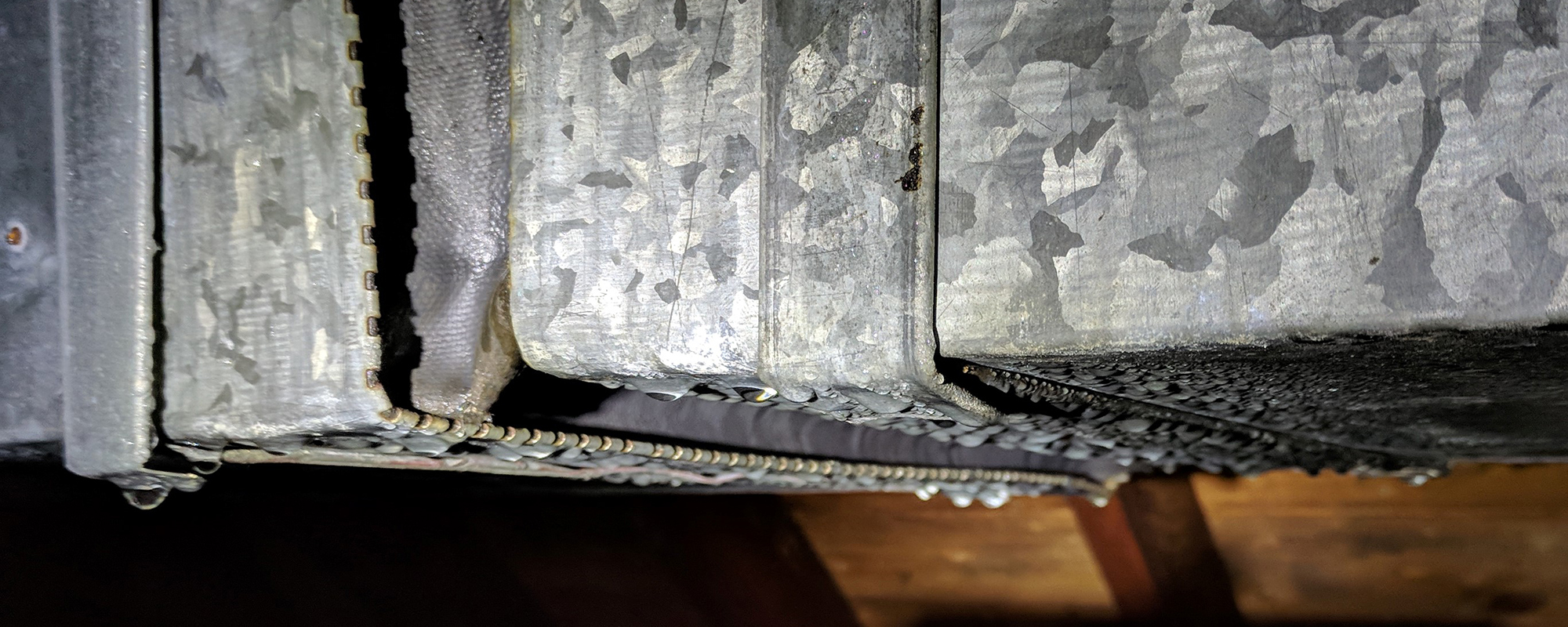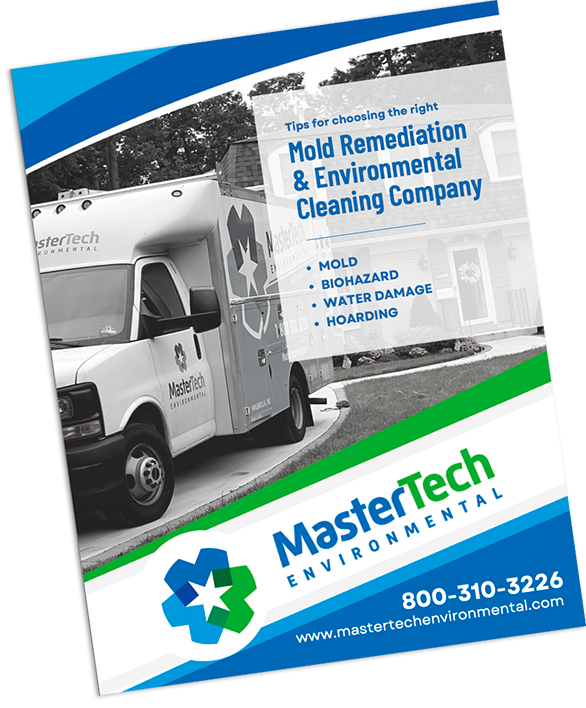Ductwork Condensation During Periods of High Humidity
Moisture buildup from ductwork condensation is a serious problem that can lead to a variety of secondary issues like the following:
- Water damaged building materials
- Insulation problems
- Compromised structural integrity
- Widespread mold growth
Because ductwork is often routed through inconspicuous areas of the home (i.e.: your basement, crawl space, attic, behind building materials, within your ceiling voids, etc.) condensation is often undetectable until secondary problems become visibly apparent. Moisture buildup from condensation is very much like a slow leak. A few droplets of water may seem harmless; however, over time, one droplet at a time, this can grow into a serious problem.
Good news, condensation on your ductwork is often manageable. Contact a professional to take a look at your sweating ducts and provide an adequate solution.
What is Condensation?
Condensation occurs when water vapors in the hot, humid air comes into contact with the cold surface of your ductwork. The sudden and immediate cooling of the water vapors converts the vapors from a gas state to a liquid state, leaving behind water droplets or “sweat” on the cooler surface– imagine the water droplets on the outside of a glass of cold beer on a hot day.
What Causes Ductwork Condensation?
Humidity is an old enemy of New Jersey homeowners. It is no secret that New Jersey summers are humid and sometimes difficult to combat. However, add to it all the extreme chimate changes recently, we are looking at a recipe for disaster. Higher humidity means more water vapors in the air around us. The extreme temperature difference between the warm, moisture air around us and the cold surface of your air conditioning ducts make condensation more likely to occur. The warm water vapors fall out of suspension as they come in contact with the surface and leave behind water droplets or “sweat.”
Humidity alone can be a serious problem if not properly addressed in a timely manner. Elevated indoor humidity can cause mold growth and lead to a variety of other issues like structural damage and property damage.
Ductwork Condensation & Indoor Mold Growth
Condensation buildup on your non-porous, metal ducts may seem harmless. However, if the condensation remains unaddressed, it can eventually affect the surrounding porous building materials, leaving you with water damage and a possible mold problem. Heavy condensation will drip onto your porous building materials like wood, drywall and insulation and lead to problems like: non-functional insulation, water damage, compromised structural integrity and widespread mold growth.
- Non-Functional Insulation- Water will drip off your condensing ducts and onto your insulation. Moisture buildup in your insulation will diminish its ability to effectively do its job. Water can compress your insulation, which decreases it’s R-value, or ability to insulate. Over time, this can lead to even more problems.
- Water Damage- Again, it may be difficult to wrap your brain around the idea that a few drops of condensation can really do that much damage to your home. Well, alone, they can’t. However, lots of droplets of condensation overtime can be a serious problem. When water condenses and drips off of your ductwork onto your porous building materials, it can lead to costly water damage if left unaddressed.
- Compromised Structural Integrity- Moisture buildup within porous building materials can compromise the structural integrity of your ceilings, walls and flooring. For example, when condensation collects within your ceiling void or wall voids, the surrounding drywall can rot and collapse over time.
- Indoor Mold Development- Heavy condensation on ducts (left unaddressed) will eventually drip off your ducts and can feed mold spores. With time, this can lead to a widespread mold contamination. If heavy condensation on your duct work has left you with water damage and mold growth, you may need professional help. A trained mold remediation professional in your New Jersey area can help.
Professional Mold Removal Services in New Jersey
If duct condensation has left you with an indoor mold problem, it is important to contact a trained mold removal professional to properly assess the situation and provide you with an adequate gameplan for mold remediation. The trained and certified mold inspectors and technicians at Mastetech Environmental have the skills, knowledge and experience to get to the bottom of the mold problem and identify what caused it in the first place. With the information gathered during a detailed assessment, our mold inspector will be able to develop a detailed scope of work for a safe and effective mold remediation.
Following a safe and effective mold remediation, it is important to hire a trained professional to address the condensation issue and prevent it from recurring. Once the mold is actively removed and the moisture source is resolved, moisture control is critical. Addressing the moisture source is the key to preventing mold regrowth.





